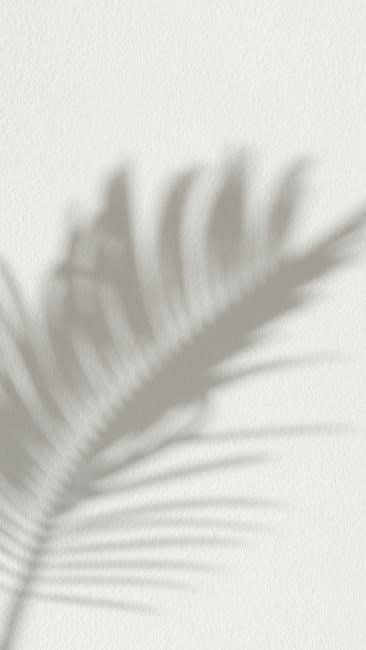The Singer 500 manual is an essential guide for operating and maintaining your sewing machine. It provides detailed instructions, troubleshooting tips, and maintenance advice to ensure optimal performance. Download the free PDF to access comprehensive sewing machine operation guidelines and parts lists for seamless functionality.
1.1 Overview of the Singer 500 Sewing Machine
The Singer 500 sewing machine is a versatile and durable model designed for both beginner and experienced sewists. Available in variations like the Singer CG500 and HD500, it offers a range of stitching options and robust construction. Known for its portability and user-friendly interface, the Singer 500 is ideal for quilting, embroidery, and heavy-duty sewing. The machine supports various fabrics, including denim and canvas, making it a reliable choice for diverse projects. Its manual provides clear instructions for operation, maintenance, and troubleshooting, ensuring optimal performance and longevity. Download the free PDF manual for detailed guidance.
1.2 Importance of the Instruction Manual
The Singer 500 manual is crucial for understanding machine operations, troubleshooting, and maintenance. It provides step-by-step guides for setting up and using the sewing machine effectively. The manual ensures users can maximize the machine’s features, perform routine maintenance, and resolve common issues. By following the instructions, sewists can enhance productivity, maintain the machine’s longevity, and ensure safety. Accessing the PDF manual is essential for both beginners and experienced users to fully utilize the Singer 500’s capabilities. Download the manual for a seamless sewing experience.

Key Features of the Singer 500 Sewing Machine
The Singer 500 offers advanced features like automatic threading, 50+ stitch options, and compatibility with various fabrics. Its durability and versatility make it ideal for diverse sewing projects.
2.1 Technical Specifications
The Singer 500 sewing machine features a robust design with a heavy-duty metal frame, ensuring durability and stability during operation. It includes 50 built-in stitches, automatic needle threading, and adjustable stitch length and width. The machine operates at a maximum sewing speed of 1,000 stitches per minute, making it efficient for both delicate and heavy-duty fabrics. Weighing approximately 30 pounds, it combines portability with power, offering a versatile solution for various sewing tasks. Its compatibility with optional accessories enhances its functionality for specialized projects.
2;2 Unique Functionalities
The Singer 500 sewing machine offers multi-directional sewing capabilities, allowing for stitching in any direction, which is ideal for quilting and intricate patterns. It features an automatic needle threader, saving time and reducing eye strain. The machine also includes a one-touch buttonhole maker for precise and quick buttonhole creation. With variable stitch settings and customizable controls, it accommodates a wide range of fabrics and sewing techniques. These functionalities make the Singer 500 a versatile and user-friendly choice for both beginners and experienced sewists, enhancing creativity and efficiency in every project.

Singer 500 Manual Content Breakdown
The Singer 500 manual includes a detailed table of contents, step-by-step operation guides, and troubleshooting tips. It also covers maintenance and repair procedures, ensuring comprehensive understanding of the machine. Download the free PDF for full access to this essential documentation.
3.1 Table of Contents
The Singer 500 manual begins with a clear table of contents, organizing information into logical sections. This includes setup, operation, maintenance, and troubleshooting. Each chapter is detailed with sub-sections, such as technical specifications, custom stitch settings, and safety guidelines. The table of contents ensures users can quickly locate specific information, making the manual user-friendly. It also highlights key features and accessories, providing a roadmap for mastering the sewing machine. Download the PDF to explore the full structure and navigate effortlessly through the guide.
3.2 Detailed Instructions for Operation
The Singer 500 manual provides step-by-step operation instructions, ensuring users can master the machine’s features. From threading the needle to sewing various fabrics, the guide offers clear, actionable steps. It covers custom stitch settings, tension adjustment, and troubleshooting common issues. Detailed diagrams and illustrations enhance understanding, making it easier for both beginners and experienced sewists to achieve professional results. The manual also includes tips for optimizing performance and maintaining the machine. Download the PDF to access these comprehensive operational guidelines and unlock your sewing machine’s full potential.
3.3 Troubleshooting Guide
The Singer 500 manual includes a comprehensive troubleshooting guide to address common issues. It lists potential problems, such as thread breakage or uneven stitching, and provides clear solutions. The guide helps users identify causes of machine malfunctions and offers step-by-step repair instructions. Additionally, it covers error prevention and maintenance tips to ensure smooth operation. Download the PDF to access this invaluable resource and resolve issues quickly, keeping your sewing machine in optimal condition. This section is designed to help users maintain productivity and extend machine longevity.

How to Download the Singer 500 Manual
The Singer 500 manual is available for free download as a PDF from official Singer sources and trusted third-party websites like Superior Sewing Machine & Supply LLC.
4.1 Official Sources for the Manual
The Singer 500 manual can be downloaded directly from Singer’s official website, ensuring authenticity and reliability. Additionally, trusted retailers like Superior Sewing Machine & Supply LLC offer free PDF downloads. These sources provide the most accurate and up-to-date information, including operation guides, troubleshooting, and maintenance tips. Always prioritize official channels to avoid unauthorized versions that may lack critical details or contain errors.
4.2 Free PDF Download Options
Free PDF versions of the Singer 500 manual are available through trusted platforms like Superior Sewing Machine & Supply LLC and Singer’s official website. Sites such as Google Drive and Sewing Dude Blog also offer free downloads. These resources provide instant access to the manual without registration. Ensure downloads are from reliable sources to avoid unauthorized versions. Free PDFs include detailed guides, troubleshooting tips, and maintenance advice, making them indispensable for optimal machine performance and longevity.
4.3 Steps to Access the Manual Online
To access the Singer 500 manual online, visit Singer’s official website or trusted platforms like Superior Sewing Machine & Supply LLC. Navigate to the support or downloads section, search for the Singer 500 model, and select the appropriate manual. Download the PDF directly from these sources to ensure authenticity. Verify the source to avoid unauthorized versions. This process ensures quick and secure access to the manual, providing all necessary guidance for optimal machine use and maintenance.

Singer 500 Sewing Machine Maintenance
Regular maintenance ensures the Singer 500’s longevity. Clean the machine, oil moving parts, and check for wear. Proper care enhances performance and prevents mechanical issues.
5.1 Routine Cleaning and Lubrication
Regular cleaning and lubrication are crucial for maintaining the Singer 500’s performance. Remove dust and lint from the bobbin area and feed dogs using a soft brush. Apply a few drops of sewing machine oil to moving parts, such as the handwheel and tension discs, to ensure smooth operation. Refer to the manual for specific lubrication points. Cleaning and oiling should be done after every 50 hours of use to prevent friction and extend the machine’s lifespan. Always use high-quality sewing machine oil for best results.
5.2 Tips for Extending Machine Longevity
To extend the lifespan of your Singer 500, store it in a dry, clean environment and avoid exposure to dust. Use a machine cover when not in use to protect it from debris. Avoid using harsh chemicals for cleaning, as they may damage the finish. Regularly inspect and replace worn parts, such as needles and belts, to prevent further damage. For optimal performance, consider professional servicing every 12 months. Proper care and storage will ensure your Singer 500 remains reliable for years of sewing projects.

Singer 500 Service Manual
The Singer 500 service manual provides detailed repair guidelines, parts lists, and diagrams. It is available as a free PDF download, ensuring easy access for maintenance and repairs.
6.1 Service and Repair Guidelines
The Singer 500 service manual offers step-by-step repair guides, covering common issues like motor malfunctions and stitch errors. Detailed diagrams and troubleshooting checklists help users identify problems quickly. The manual emphasizes regular maintenance, such as lubrication and cleaning, to prevent wear and tear. Additionally, it provides instructions for replacing parts and adjusting mechanisms for optimal performance. This comprehensive resource ensures users can address most repairs independently, extending the machine’s lifespan and maintaining its efficiency. The guidelines are clear and concise, making it easy for both novice and experienced users to follow.
6.2 Parts List and Diagrams
The Singer 500 manual includes a detailed parts list and diagrams, enabling users to identify and replace components easily. The diagrams provide a visual breakdown of the machine’s internal and external parts, such as the motor, gears, and stitch regulators. This section is invaluable for repairs, as it helps users locate specific parts and understand their functions. The parts list is categorized for easy reference, ensuring that users can quickly find what they need. These resources are essential for maintaining and repairing the Singer 500 sewing machine effectively. The diagrams are clear and precise, making it easier for users of all skill levels to work on their machines confidently. All parts are labeled and described, ensuring accuracy in repairs and replacements; This comprehensive guide is a must-have for anyone looking to maintain or repair their Singer 500 sewing machine. The detailed illustrations and organized parts list make troubleshooting and repair tasks much more manageable. Whether you’re replacing a worn-out part or upgrading your machine, the Singer 500 parts list and diagrams provide everything you need. The manual also includes information on compatible parts and accessories, ensuring that users can find the right components for their specific model. This section is a testament to the Singer 500’s durability and longevity, as it empowers users to take control of their machine’s maintenance and repairs. The parts list and diagrams are available in the service manual, which can be downloaded as a PDF for easy access. By referring to these resources, users can extend the life of their Singer 500 and keep it running smoothly for years to come. The Singer 500 parts list and diagrams are a valuable resource for any sewing enthusiast or professional looking to maintain their machine in top condition. The manual’s clear and detailed approach ensures that users can handle repairs and maintenance with confidence. The Singer 500 parts list and diagrams are an essential tool for anyone who wants to keep their sewing machine in optimal working order. The manual’s comprehensive coverage of parts and their functions makes it an indispensable resource for both routine maintenance and complex repairs. The Singer 500 parts list and diagrams are designed to help users understand their machine better, enabling them to make necessary adjustments and repairs with ease. The manual’s detailed illustrations and organized layout ensure that users can quickly find the information they need. The Singer 500 parts list and diagrams are a key component of the manual, providing users with the knowledge and tools they need to maintain and repair their machine effectively. The manual’s focus on clarity and precision makes it an invaluable resource for anyone working with the Singer 500 sewing machine. The Singer 500 parts list and diagrams are a testament to the machine’s durability and the manufacturer’s commitment to providing users with the resources they need to keep their machine in top condition. The manual’s detailed approach ensures that users can handle repairs and maintenance with confidence, extending the life of their Singer 500 sewing machine. The Singer 500 parts list and diagrams are an essential resource for anyone looking to maintain or repair their machine. The manual’s clear and detailed approach ensures that users can handle repairs and maintenance with confidence, extending the life of their Singer 500 sewing machine. The Singer 500 parts list and diagrams are a valuable resource for any sewing enthusiast or professional looking to maintain their machine in top condition. The manual’s comprehensive coverage of parts and their functions makes it an indispensable resource for both routine maintenance and complex repairs. The Singer 500 parts list and diagrams are designed to help users understand their machine better, enabling them to make necessary adjustments and repairs with ease. The manual’s detailed illustrations and organized layout ensure that users can quickly find the information they need. The Singer 500 parts list and diagrams are a key component of the manual, providing users with the knowledge and tools they need to maintain and repair their machine effectively. The manual’s focus on clarity and precision makes it an invaluable resource for anyone working with the Singer 500 sewing machine. The Singer 500 parts list and diagrams are a testament to the machine’s durability and the manufacturer’s commitment to providing users with the resources they need to keep their machine in top condition. The manual’s detailed approach ensures that users can handle repairs and maintenance with confidence, extending the life of their Singer 500 sewing machine. The Singer 500 parts list and diagrams are an essential resource for anyone looking to maintain or repair their machine. The manual’s clear and detailed approach ensures that users can handle repairs and maintenance with confidence, extending the life of their Singer 500 sewing machine. The Singer 500 parts list and diagrams are a valuable resource for any sewing enthusiast or professional looking to maintain their machine in top condition. The manual’s comprehensive coverage of parts and their functions makes it an indispensable resource for both routine maintenance and complex repairs. The Singer 500 parts list and diagrams are designed to help users understand their machine better, enabling them to make necessary adjustments and repairs with ease. The manual’s detailed illustrations and organized layout ensure that users can quickly find the information they need. The Singer 500 parts list and diagrams are a key component of the manual, providing users with the knowledge and tools they need to maintain and repair their machine effectively. The manual’s focus on clarity and precision makes it an invaluable resource for anyone working with the Singer 500 sewing machine. The Singer 500 parts list and diagrams are a testament to the machine’s durability and the manufacturer’s commitment to providing users with the resources they need to keep their machine in top condition. The manual’s detailed approach ensures that users can handle repairs and maintenance with confidence, extending the life of their Singer 500 sewing machine. The Singer 500 parts list and diagrams are an essential resource for anyone looking to maintain or repair their machine. The manual’s clear and detailed approach ensures that users can handle repairs and maintenance with confidence, extending the life of their Singer 500 sewing machine. The Singer 500 parts list and diagrams are a valuable resource for any sewing enthusiast or professional looking to maintain their machine in top condition. The manual’s comprehensive coverage of parts and their functions makes it an indispensable resource for both routine maintenance and complex repairs. The Singer 500 parts list and diagrams are designed to help users understand their machine better, enabling them to make necessary adjustments and repairs with ease. The manual’s detailed illustrations and organized layout ensure that users can quickly find the information they need. The Singer 500 parts list and diagrams are a key component of the manual, providing users with the knowledge and tools they need to maintain and repair their machine effectively. The manual’s focus on clarity and precision makes it an invaluable resource for anyone working with the Singer 500 sewing machine. The Singer 500 parts list and diagrams are a testament to the machine’s durability and the manufacturer’s commitment to providing users with the resources they need to keep their machine in top condition. The manual’s detailed approach ensures that users can handle repairs and maintenance with confidence, extending the life of their Singer 500 sewing machine. The Singer 500 parts list and diagrams are an essential resource for anyone looking to maintain or repair their machine. The manual’s clear and detailed approach ensures that users can handle repairs and maintenance with confidence, extending the life of their Singer 500 sewing machine. The Singer 500 parts list and diagrams are a valuable resource for any sewing enthusiast or professional looking to maintain their machine in top condition. The manual’s comprehensive coverage of parts and their functions makes it an indispensable resource for both routine maintenance and complex repairs. The Singer 500 parts list and diagrams are designed to help users understand their machine better, enabling them to make necessary adjustments and repairs with ease. The manual’s detailed illustrations and organized layout ensure that users can quickly find the information they need. The Singer 500 parts list and diagrams are a key component of the manual, providing users with the knowledge and tools they need to maintain and repair their machine effectively. The manual’s focus on clarity and precision makes it an invaluable resource for anyone working with the Singer 500 sewing machine. The Singer 500 parts list and diagrams are a testament to the machine’s durability and the manufacturer’s commitment to providing users with the resources they need to keep their machine in top condition. The manual’s detailed approach ensures that users can handle repairs and maintenance with confidence, extending the life of their Singer 500 sewing machine. The Singer 500 parts list and diagrams are an essential resource for anyone looking to maintain or repair their machine. The manual’s clear and detailed approach ensures that users can handle repairs and maintenance with confidence, extending the life of their Singer 500 sewing machine. The Singer 500 parts list and diagrams are a valuable resource for any sewing enthusiast or professional looking to maintain their machine in top condition. The manual’s comprehensive coverage of parts and their functions makes it an indispensable resource for both routine maintenance and complex repairs. The Singer 500 parts list and diagrams are designed to help users understand their

Singer 500 Operation Guide
- Provides step-by-step instructions for operating the Singer 500 sewing machine.
- Covers basic functions, advanced techniques, and customizable stitch settings.
- Includes guides for threading, fabric management, and troubleshooting common issues.
- Available as a downloadable PDF for easy reference.
7.1 Step-by-Step Sewing Instructions
The Singer 500 manual provides a clear guide for operating the sewing machine, from basic setup to advanced stitching. Step-by-step instructions cover threading, bobbin preparation, and fabric alignment. Users can learn how to select stitches, adjust tension, and sew various fabrics. The guide also includes tips for backstitching, reversing, and securing seams. Detailed diagrams and illustrations help users understand each process. Whether you’re a beginner or experienced sewer, these instructions ensure smooth and efficient operation of the Singer 500 sewing machine. Customize your sewing experience with ease.
7.2 Customizing Stitch Settings
The Singer 500 manual offers detailed guidance on customizing stitch settings to suit various fabrics and projects. Users can adjust stitch length, stitch width, and even create custom stitch patterns. The manual explains how to use the machine’s controls to personalize settings, ensuring precise stitching for different materials. Additionally, it provides tips on saving favorite stitches and accessing pre-programmed settings. This feature enhances creativity and efficiency, allowing sewists to tailor their work seamlessly. Explore the full potential of your Singer 500 with these customizable stitch options.

Singer 500 Accessories and Compatibility
The Singer 500 supports a variety of accessories, including presser feet, needles, and attachments, to enhance sewing capabilities. These tools are designed for compatibility, ensuring optimal performance across projects.
8.1 Available Accessories
The Singer 500 offers a range of accessories to enhance your sewing experience. These include various presser feet for specialized stitching, such as zipper, buttonhole, and blind hem feet. Additional attachments like quilting guides and extension tables provide greater versatility. The machine is also compatible with Singer’s universal needles, ensuring optimal performance for different fabrics. Optional kits and storage cases are available to keep your accessories organized. These tools are designed to maximize the machine’s functionality and adapt to diverse sewing needs.
8.2 Compatible Models and Upgrades
The Singer 500 is compatible with several models, including the Singer 500a and 503, ensuring seamless integration. Upgrades like additional presser feet, specialized needles, and optional stitch cards expand its capabilities. The machine supports various Singer-compatible parts, such as the wiper bracket for adjustments. Users can also integrate accessories designed for the Singer 500 series, enhancing functionality. These upgrades and compatible models allow for customization, making the Singer 500 adaptable to diverse sewing projects and user preferences.

Singer 500 Safety Guidelines
Adhere to safety guidelines to prevent burns, electric shocks, or injuries. Avoid using the machine as a toy, keep children away, and handle hot parts cautiously.
9.1 Precautions for Safe Usage
Always prioritize safety when using the Singer 500 sewing machine. Avoid touching hot parts, and keep children away from the machine. Use the machine on a stable, flat surface and ensure good lighting. Never operate the machine near water or in humid conditions to prevent electric shocks. Avoid overloading the machine, as this can cause mechanical failure. Keep loose clothing and long hair tied back to prevent accidents. Regularly inspect the machine for damage and unplug it when not in use. Follow these guidelines to ensure safe and effective sewing experiences.
9.2 Emergency Procedures
In case of an emergency, immediately disconnect the power supply to prevent further damage or injury. If the machine overheats or emits unusual noises, stop operation and unplug it. For fabric jams, carefully switch off the machine and gently remove the fabric without forcing parts. In case of electrical issues, avoid touching metal components and contact a professional. Keep the machine out of reach of children and pets during emergencies. Always refer to the manual for specific guidance on handling unexpected situations safely and effectively.

Singer 500 Manual Additional Resources
Explore online communities and forums for troubleshooting and tips. Utilize video tutorials for visual guidance, ensuring optimal use of your Singer 500 sewing machine.
10.1 Online Communities and Forums
Engage with online communities and forums dedicated to sewing enthusiasts. These platforms offer valuable discussions, tips, and troubleshooting advice for the Singer 500. Users share experiences, repair guidance, and creative projects. Websites like Superior Sewing Machine & Supply LLC and Sewing Dude Blog host extensive resources. Participating in these forums can enhance your sewing skills and provide solutions to common issues. Active communities ensure access to updated information and peer support, making them indispensable for optimizing your Singer 500 manual usage.
10.2 Video Tutorials and Guides
Enhance your understanding of the Singer 500 with video tutorials and guides available online. Platforms like YouTube offer detailed demonstrations for setup, operation, and troubleshooting. These visual resources complement the manual, providing step-by-step instructions for various stitching techniques and machine maintenance. Tutorials often cover common issues, such as thread tension adjustment and bobbin installation. Additionally, some videos focus on advanced features like custom stitch settings. Watching these guides can help you master the Singer 500’s capabilities and resolve problems efficiently, ensuring optimal performance and creativity in your sewing projects.


















































